Sinquefield Cup 2018 Round 4+5: It's a 5-way tie
With 3.0/5 points we have 5 leaders sharing the lead in the Sinquefield Cup 12018. Round 4 seemed to repeat the same story again, Caruana was able to finish off Hikaru Nakamura without a protracted ending! As the rounds roll on and at least a couple of games get decided just out of opening every day, it dawns on us: opening preparation is the elephant in the room that we all should comprehend first, before criticising top players for the travesty of ‘Grandmaster draws’. Note – not ‘short Agreed draws’ but ‘short Grandmaster draws.' IM V. Saravanan send you a detailed report of what took place in the 4th and 5th round of the Sinquefield Cup 2018.
Round 4: Mamedyarov - Aronian
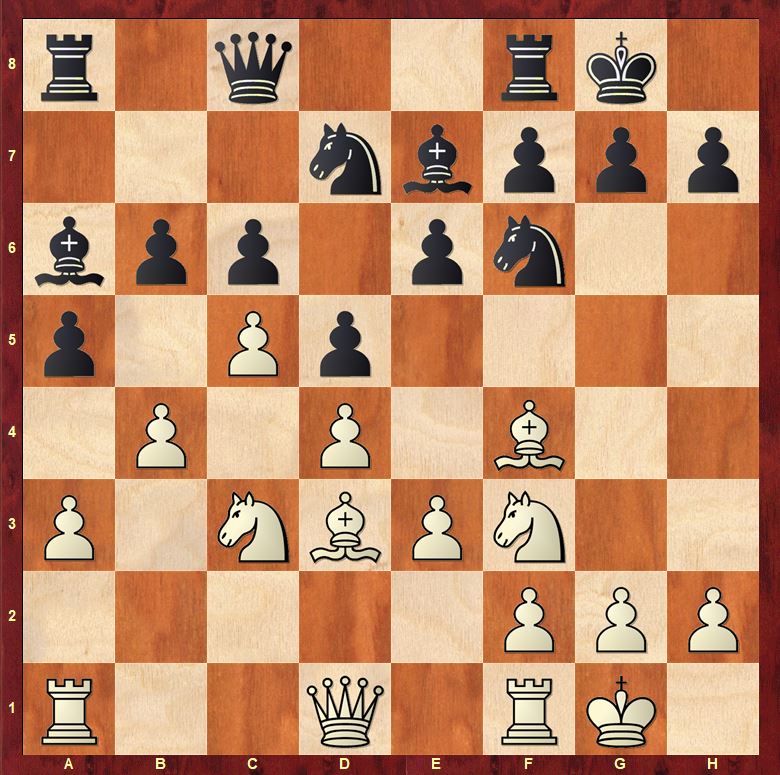
Curiously, Aronian too has played this exact position, and it will remain unclear what was it that Mamedyarov wanted over the board…and why a tame draw was agreed

Round 4: Grischuk – Vachier-Lagrave

Vachier-Lagrave is indeed Mr. Najdorf right now. Have a look at the position and try to understand: he played 15…d5 against Caruana in the Saint Louis Rapid a week ago, 15…Nxd3 against Anand in the second round and 15…h5 in this game, which he has also done in previous occasions. Still, he got into the Confession Booth during the game had to say, “I keep playing the Najdorf, I change variations…Sasha must be in his preparations, but still trying to navigate things…as far as I know I am fine, but…obviously I could have missed something…this is what can happen in the Najdorf…”.
But the Frenchman’s confidence in his Najdorf was not misplaced, though at some point Grischuk looked like he was cooking something up:
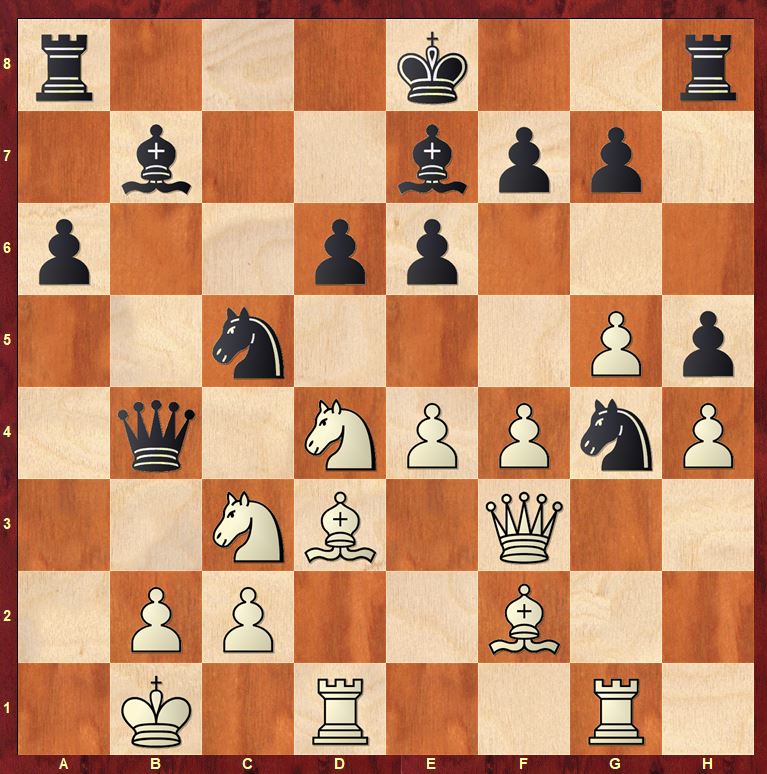
Grischuk now uncorked 20.Rxg4, making all of us sit up in our seats, but alas! nothing much really happened…20…hxg4 21.Qxg4 Rb8 and now they repeated the moves with 22.Na2 Qa4 23.Nc3 Qb4 two more times here…
So Wesley – Sergei Karjakin was a game which went on for a long time with seemingly not much happening, but the game had its interesting moves, though the struggle never really heightened to any crescendo…
Round 4: So – Karjakin
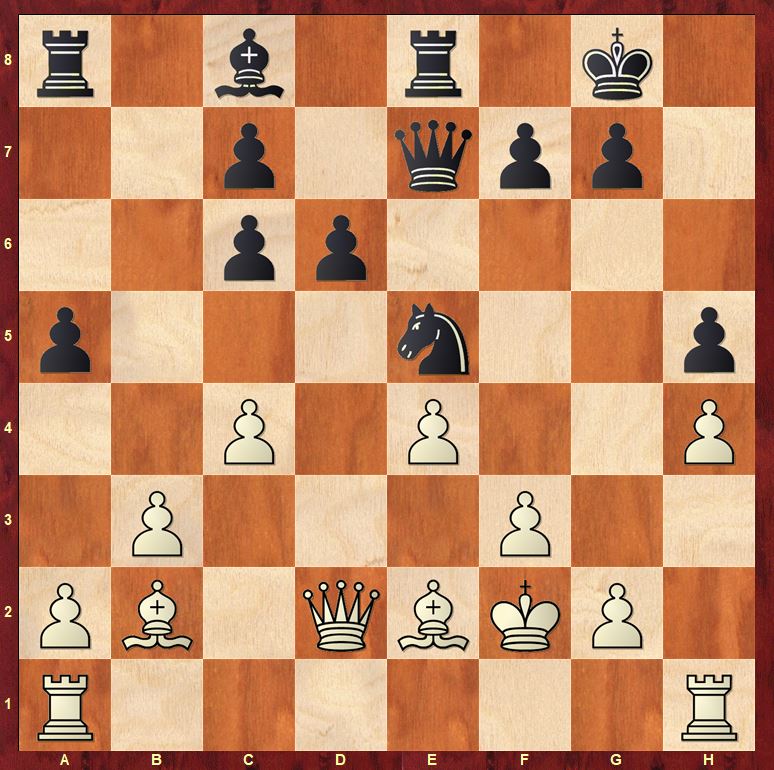
But for his King, white has many things going on in his favour here, and So didn’t seem to act decisively here, continuing with 20.Rae1. White had many alternatives here, which all worth deeper analysis, which obviously we cannot afford to do here. Sample variations:
a) 20.Qg5 f6! [20…Qxg5 21.hxg5 g6 gives way to 22.g4!] 21.Qxh5 Be6 and black has compensation, as white’s queen will remain inactive for a long time.
b) 20.c5!? (The idea is simple – if black captures 20…dxc5? Then 21.Qg5 becomes critical) d5!? and it is a mess here – sample variation: 21.exd5 Qxc5+ 22.Qd4 Qc1!? with a dynamic position.
c) 20.g4!? This is our favourite. This position is so crazily complicated that we will not even attempt to anlayse here. Suffice to say that after 20…hxg4 21.f4 Nd7 22.Bxg4 a4 we do not know what is going on, and probably we cannot fault So not to go in for this line, as it is extremely risky.
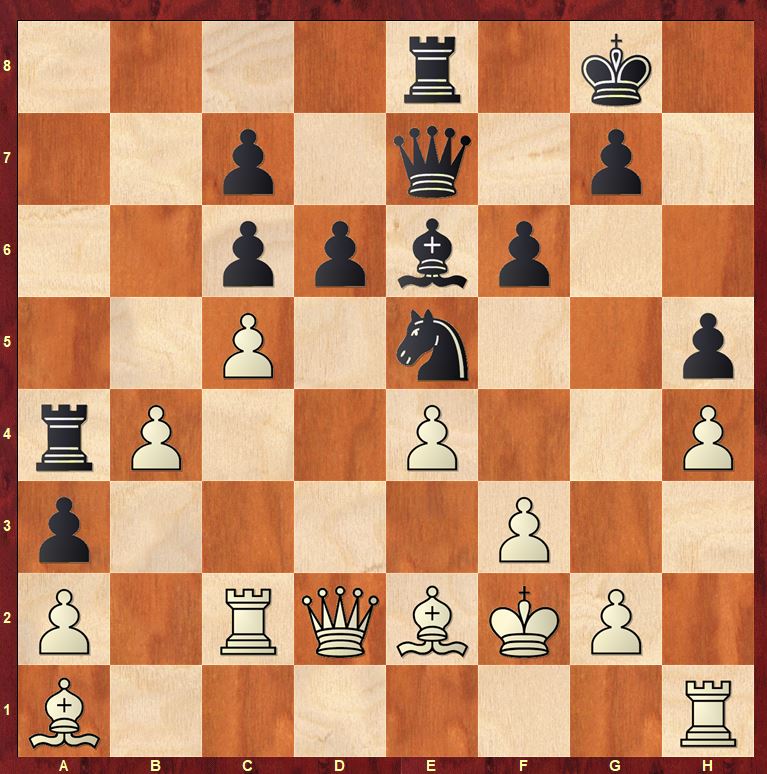
The balance has tilted now, and Karjakin went easy here with 25…Rb8 26.cxd6 cxd6 27.Bc3… and the game remained equal. In the diagrammed position above, 25…d5 seemed critical. Logically, since the black king is much safer than the white king, it made sense to open up the centre, as black’s pieces seemed to be getting more active than white’s: 26.exd5 Bxd5 27.Re1 Qf7 and white has too many targets to take care of here.

Without doubt, the clash between the world champion and his predecessor was a game which generated a lot of interest.
Anand and Carlsen have played each other the maximum number of times among everyone here – my database gives the number of their mutual encounters at a whopping 112! Does it feel significant for Anand to play against Carlsen in a tournament, after all these years, including two world championship matches? “It is special definitely, but it happens 3 or 4 times in a year. So, he is also a (just) guy on the circuit. (The matches) happened too far back”, said Anand in a chat.
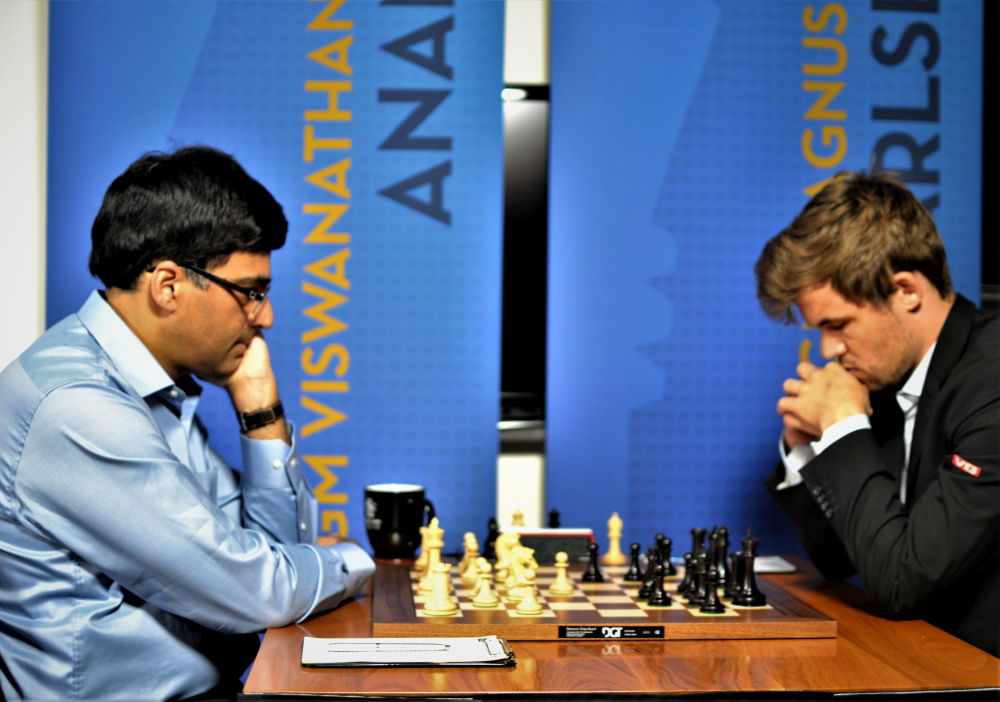
The other significance is Carlsen’s choice of 1.e4 c5 2.Nf3 Nc6 in today’s game as well as against Vachier in the first round. Either the Sveshnikov or the Accelerated Dragon might have been on the cards, but he hasn’t employed them since 2015!
The point is, when playing Vachier and Anand, Carlsen might have been indirectly playing against Caruana also! The world championship match being just about two months away, Carlsen may probably be hiding his real preparation from his challenger just for this single tournament. Or, by inverse logic, he may actually be planning to play the Sicilian in the match atleast for a limited number of games, and playing them here might give his challenger a wrong scent? A classic 'Hidden Ball Trick' situation?!
Anyway, Vishy seemed to be quite well prepared, making his moves quickly in the opening and trying to inject dynamism in the position as early as possible:

16.h4 In many of his games against Carlsen, Anand has done well when he creates dynamic activity, rather than playing the strategic kind of chess which is Carlsen’s forte. 6…Nd4 17.h5 g5 and it looked like we were going to have a fight in our hands after all.
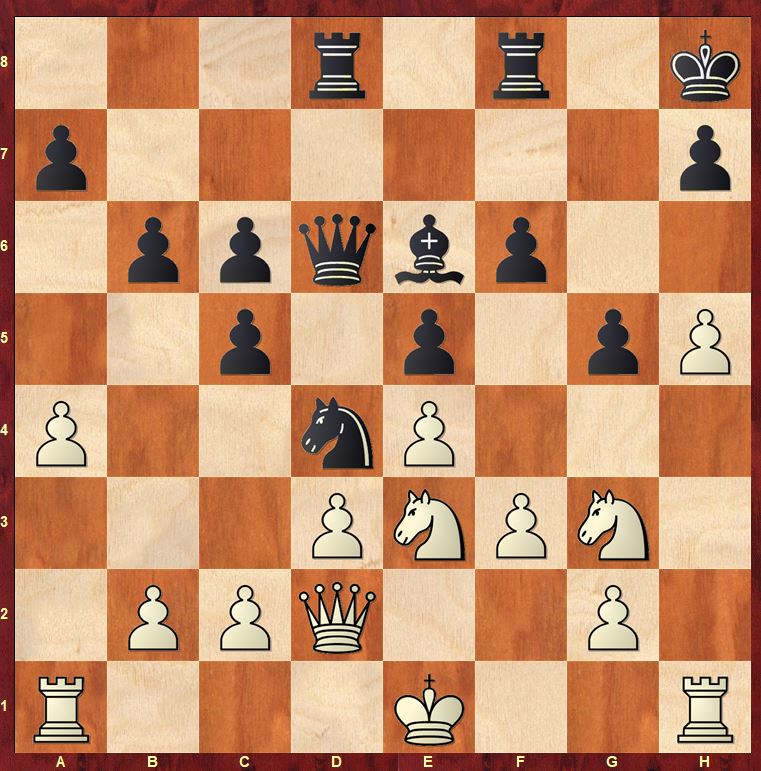
21.Kf2? [This is where things started going wrong for Anand. He was later wondering if he could have done the whole thing with some more prearation, and he was correct! 21.Rd1!? (The idea is to get black’s knight on d4 away before revealing his cards) h6 22.c3 Nb3 23.Qc2 and it is still debatable if white’s control of the f5 square means anything at all] 21…Qe7 22.Qd1?! [Probably overlooking the opponent’s resource] 22…c4! 23.dxc4 f5!? [Needless to say, Anand was ready to sacrifice his queen after 23…Nb3 24.cxb3 Rxd1 25.Rxd1] 24.exf5 Nxf5 and it was obvious that white was under pressure.

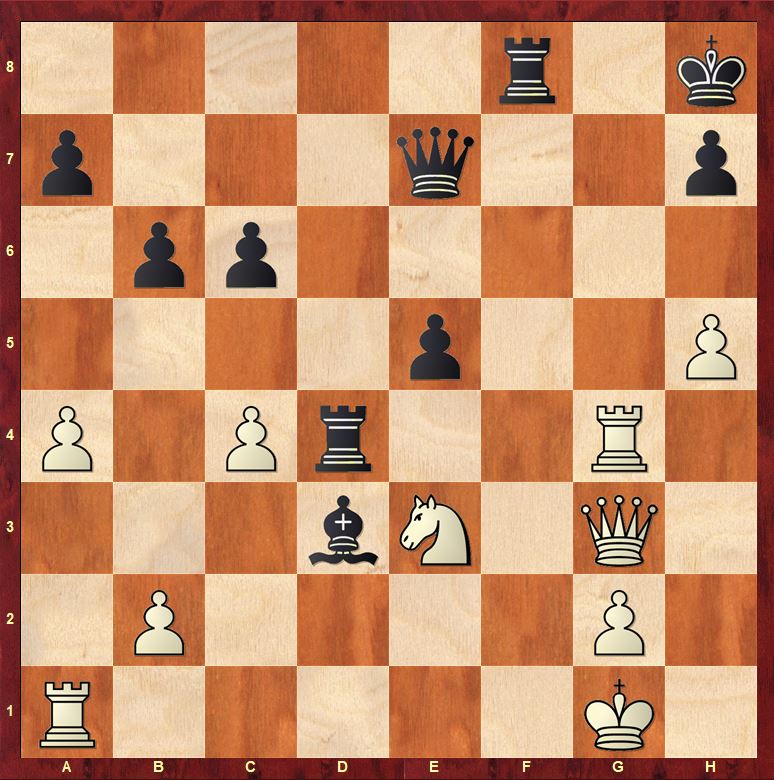
Later Anand opined that this was the position where he was a little ‘concerned’ about 31…Rdf4, but Carlsen allowed the simplification 31…Rxg4 32.Nxg4 e4 33.Qe5 and the resultant ending didn’t offer much for both sides, though precise play was required, and given.
Annotations by Tanmay Srinath
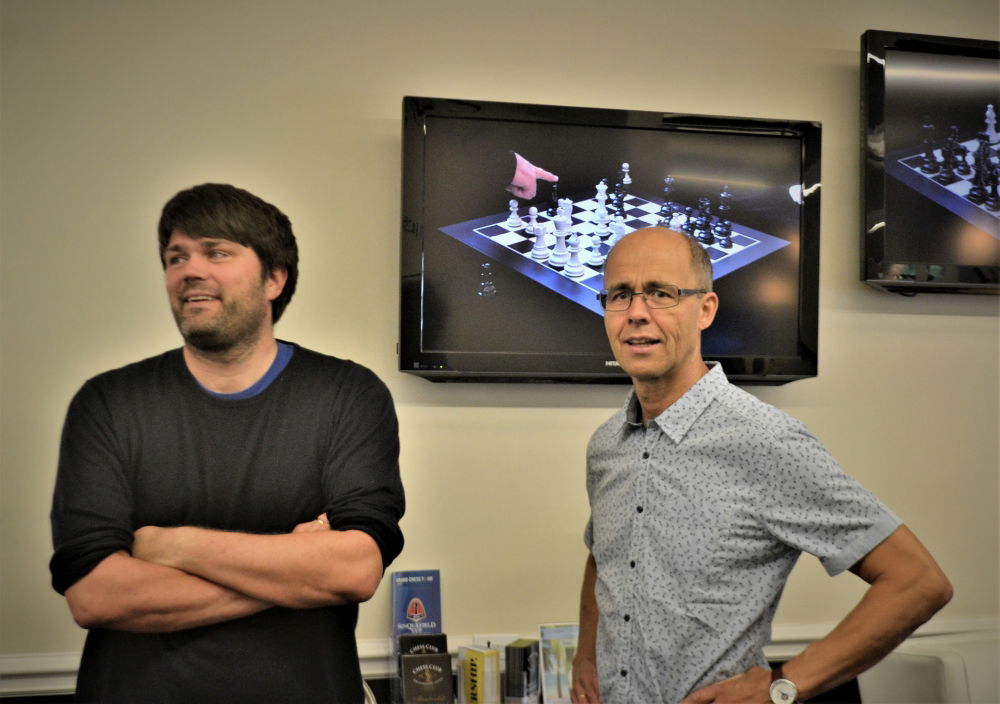
A relieved Anand went to the Confession Booth during the game and really confessed! “Yes, so…(sigh!)…A very tense game…I had to bring my king back… I was getting a bit worried… Lot of back and forth, and now I think I have things under control…” Hey, didn’t our coaches taught us earlier in our youths that we were neither to have panic nor to have relief during the game, but to keep constant vigil all the time?! Anyway, the guy who invented these Confession sessions was definitely a genius…
Since the Saint Louis Rapid & Blitz didn’t go too well for him, the former world champion seems to have given his safety instincts a miss and have gone for dynamic complications in his three of his games so far. Was it a conscious decision to choose sharp openings in these games? “I am not making my (opening choice) decisions on stylistic grounds! I try to play good lines, whatever is called for. I am not choosing a style…It’s not like I have a theme and the opening choice is (made as accordingly),” asserted Anand.
This was the round when Caruana’s persistence finally paid off. The challenger has been remarkably pressing his opponent’s in two of the earlier rounds and was close to being rewarded. Today’s game too took on the same paths:

Round 4: Caruana - Nakamura

And here came Caruana’s preparation introducing a new move 14.0-0-0!? - an open challenge for a lively battle. True to his character, Caruana calmly revealed during the post-game chat that he had prepared this new move a ‘few months’ before! His logic was that, against the regular 14…Bb7 15.f3 Nd5 16.Bd4, white can now start pushing his pawns on the kingside and mount on attack on the black king, since the white king is on c1 rather than g1. Simple!
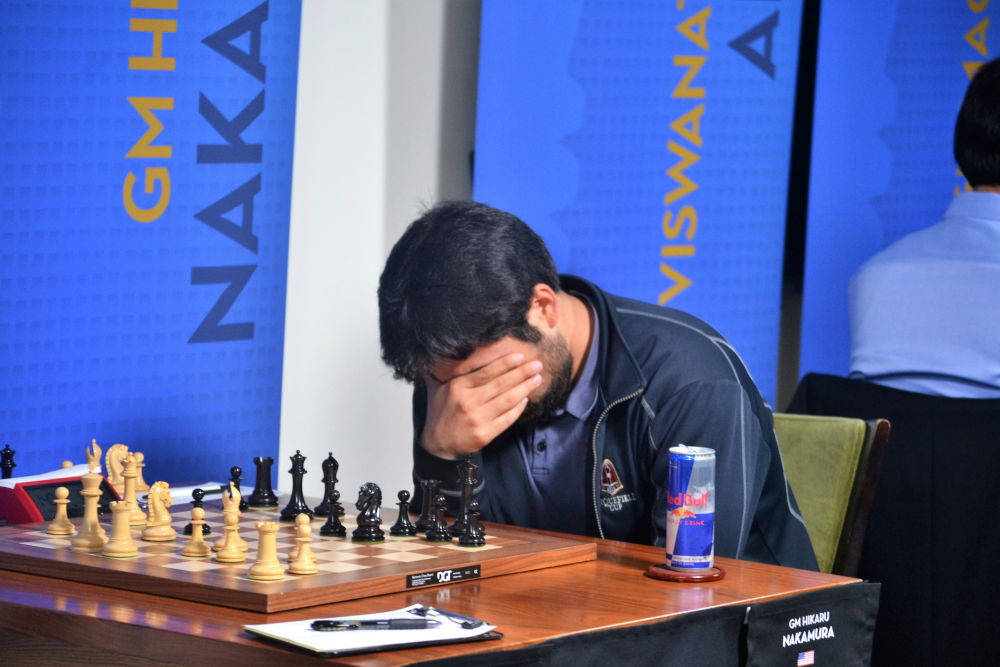
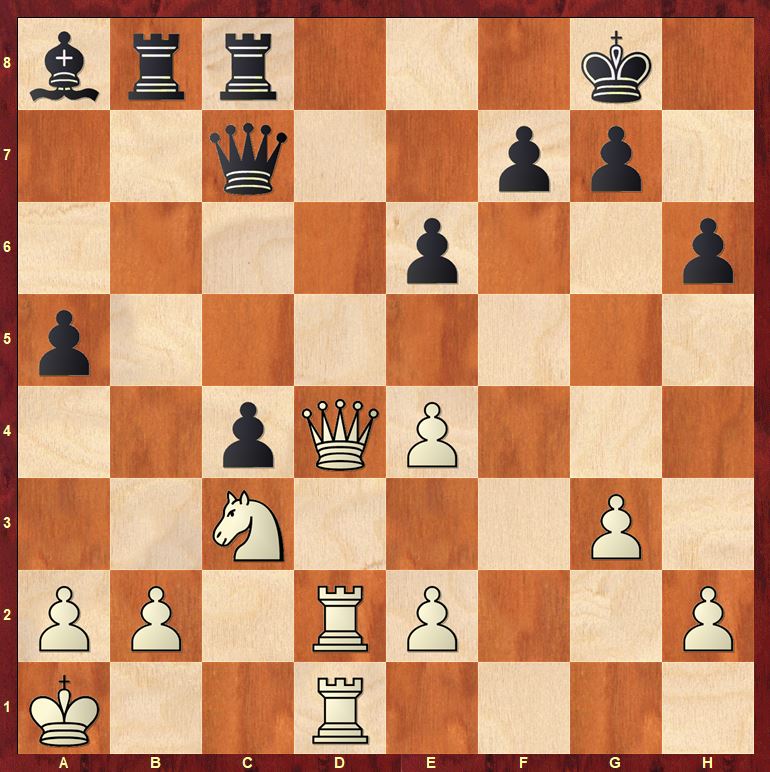
Though Fabi liked his position here, he wasn’t sure what he wanted to do here, but his opponent didn’t play perfectly: 24.Qf2 Bc6 25.Qc5 Be8?! [The queen exchange gives white a pleasant position, mainly because of the relative difference in strength between the knight and the bishop, and white’s rooks dominating the d-file] 26.Qxc7 Rxc7 27.Rd6 and white started probing the queenside.
Though Nakamura fought on grittily, his decisive mistake came in time pressure:
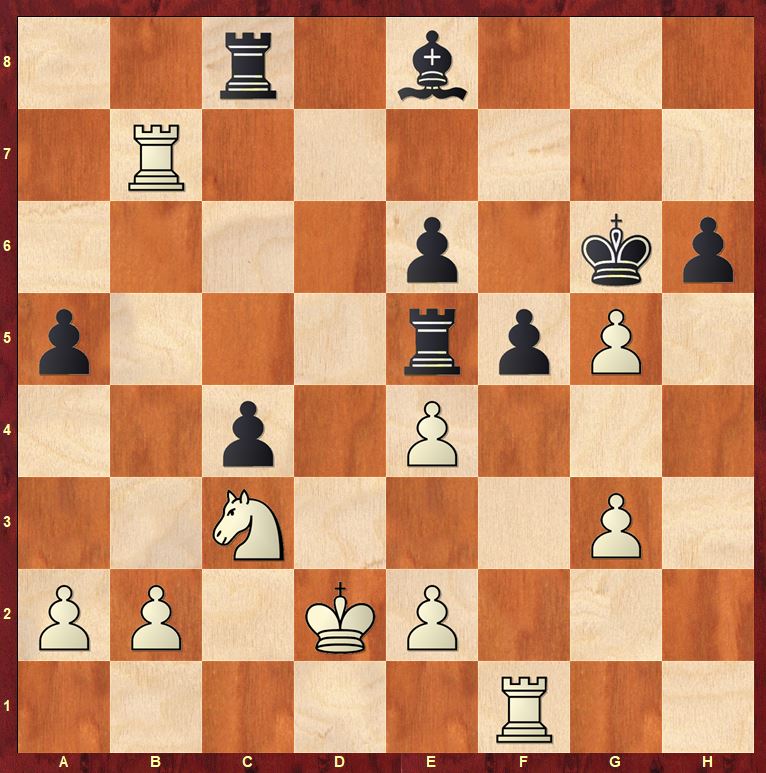
36…fxe4? 37.Ke3! Bc6 [The extent of Nakamura’s blunder is revealed in the variation 37…Kxg5 38.Rg7+ Bg6 38.Kd4! and black is lost! If 37…hxg5 38.g4 and black’s pieces are a thoroughly disjointed lot] 38.Re7 [Again threatening 39.Kd4!] 38…Rxg5 39.Rxe6+ Kg7 40.Re7+ Kg6 41.Rd1 and white was completely better. Fabiano thus won a well conducted game and jumped to joint lead.
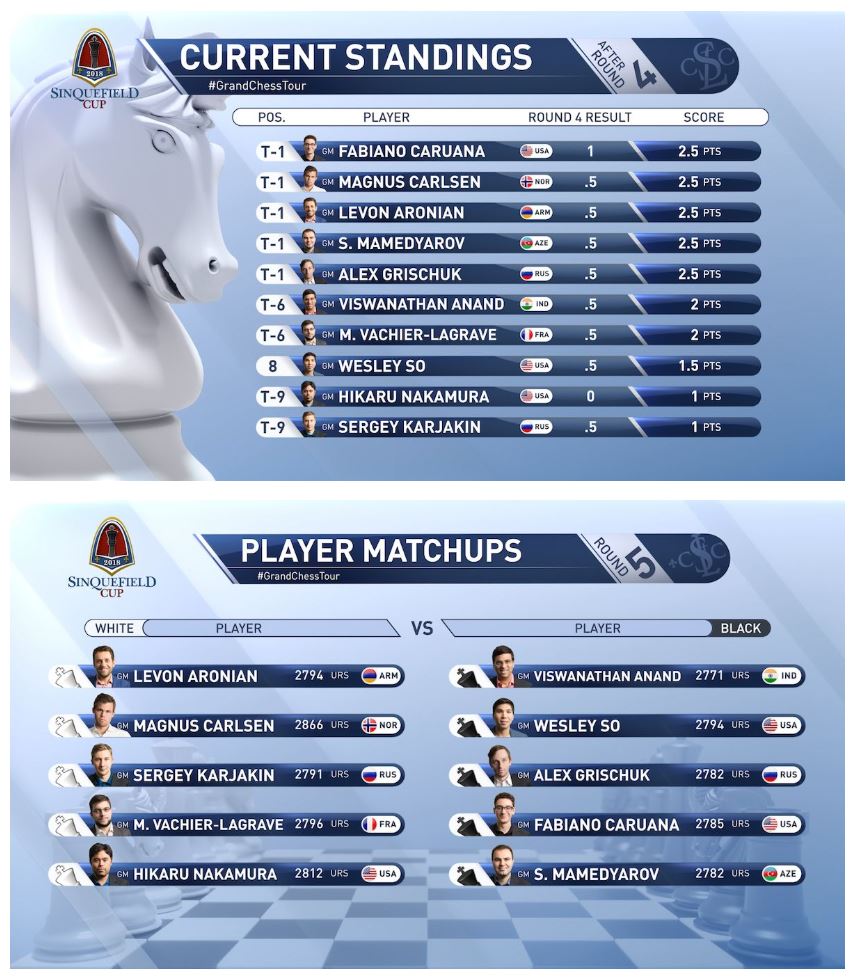
Round 5 Report!
After yesterday when Mamedyarov drew with Aronian with white pieces without even putting up a show, we were treated to another spectacle today when Vishy Anand neutralised Aronian’s… Bf4 variation of the QGD which he faced yesterday from the other side of the board!
Round 5: Aronian - Anand
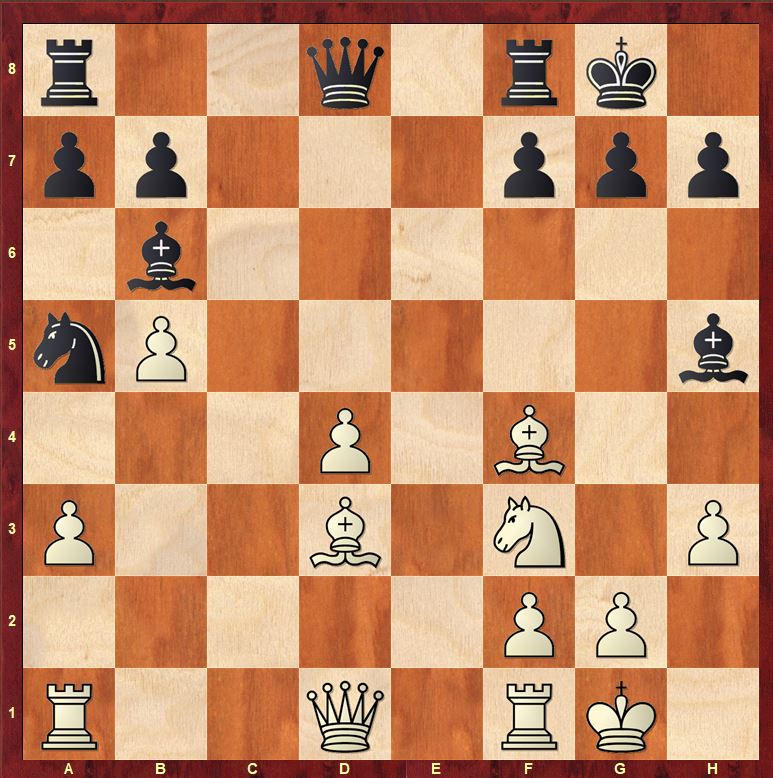
In a known position, Anand came up with 16…Qf6, a novelty. Very soon, the position got completely simplified and the game ended in a draw in 36 moves.
Understandably, this may not be very good news for all those who follow the tournament – both among those who pay $10 to enter the Saint Louis Chess Clubs and those who even sacrifice a good night’s sleep staring at a monitor helped by a flask of Coffee.
But what did Anand had to say about the whole thing? First, about his new move, “I have had it in my notes for a while. 2 - 3 times I played 16…Qd5, thinking that was our improvement over 16…Qf6, and (my seconds) would look at me and tell me, ‘No, you mixed it up again!’ So I had this nice note in block capitals saying ‘Not …Qd5’! When you have had both moves in your head you don’t know which one is which! But luckily I have figured out by now, that it is Qf6, and I have played it (today). It is quite an important improvement, as it kills this particular line.”
Let’s see it from the white player’s viewpoint. With multi-core machines of today, opening preparation, and chess itself, has evolved drastically in the last decade. In a top tournament - like the current one - all the players are well-prepared using computer databases and it is difficult to find an area in the opponent’s arsenal where one can probe with a worked out concept at home. This means a high percentage of draws in top tournaments.
Aronian echoed the predicament, starting by pointing out that the start of the round earlier in the day has its effect too – once you focus on a certain line, you have to play it. (He says later that games in tournaments usually start around 3.00 pm (unlike the 01.00 pm start at Saint Louis). “You don’t have the time to change your mind, as chess players usually do. I decided to play this opening in the morning, I checked 14…d4 but didn’t analyse 16…Qf6. Once it appeared, I realised that black has very comfortable play”.
Of course, Vishy sympathises with the chess public, “I know it doesn’t warm your hearts, this kind of draw. Well, it’s (my) bread and butter, (as) it is a tough line, black can easily suffer if he is imprecise. So, 14…d4 and 16…Qf6 is nice to have”.
Annotations by Tanmay Srinath
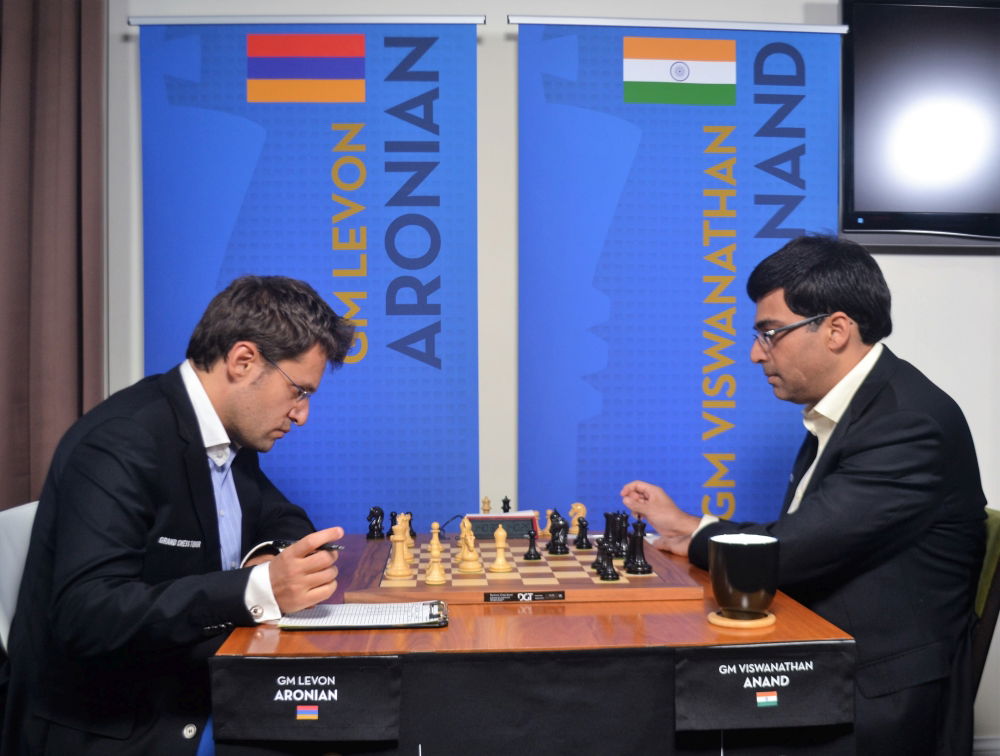
Aronian has similar views too, “Of course, it is very disappointing to have a game like that…But you don’t have the time to analyse so deep before the game”.
Your seconds don’t analyse such things long in advance? “Not really. I mostly nowadays work on my own”.
Another game was shaping up in a better way for the white player around this time:
Round 5: Vachier-Lagrave - Caruana
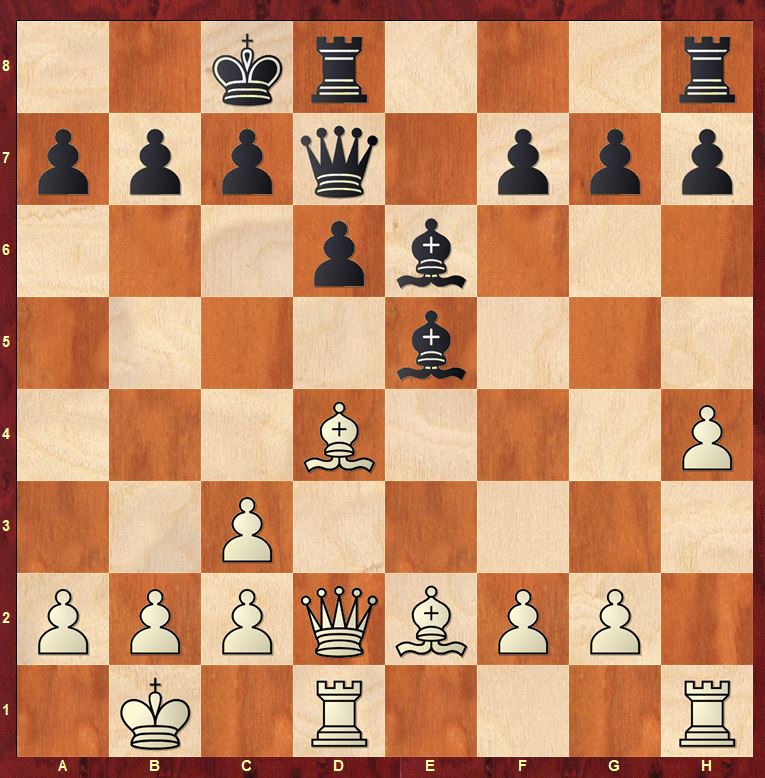
The position arose from the Petroff, a defence which is one of Caruana’s main weapons, the ‘original equalising weapon’ before the Berlin came into fashion. The position has occurred before, and it is surprising that Caruana entered the position at all, as this is the kind of position which white players can expect in modern chess, even after finding any new idea! Fabiano agreed, “I knew I was very close to equal, but I was a little bit uncomfortable with how I should play”.
His opponent was happier than Caruana probably thought:

Delighting the audience by getting into the Confession Booth here, Vachier sounded quite optimistic, ”Pleasantly surprised by the outcome of the opening so far. Saw so many nuances, I am able to keep the pressure going. If I manage to keep the bishops it is clear that I am going to press for some time. My main idea is to press not only the kingside – the h-file – but also on the e-file, and the long diagonal. I don’t see Fabi’s counterplay here. I am sure he will find some, but I think I have the upper hand here.”


So, we had proof in the same round that our Grandmasters still remain with imperfections, thankfully, and hence we will get to see lots of fighting games after all! But surprisingly, Vachier’s optimism wasn’t really appreciated in Caruana’s calm assessment of the position, as he seemingly went on to find equality from the diagrammed position: 20…Bf5 21.hxg6 hxg6 22.Rh7 Re7 23.g4 Bd7 and white had nothing to show here.
Talking of openings, there is another topic about which we shall never discuss in these pages: The Berlin Wall! We shall all be intrigued by this system forever, as it seems there personal ways to understand the opening, as expressed by Aronian a couple of days ago. We can only be continued to be intrigued whenever it appears in a high level clash, as it did on Wednesday also:
Round 5: Karjakin - Grischuk
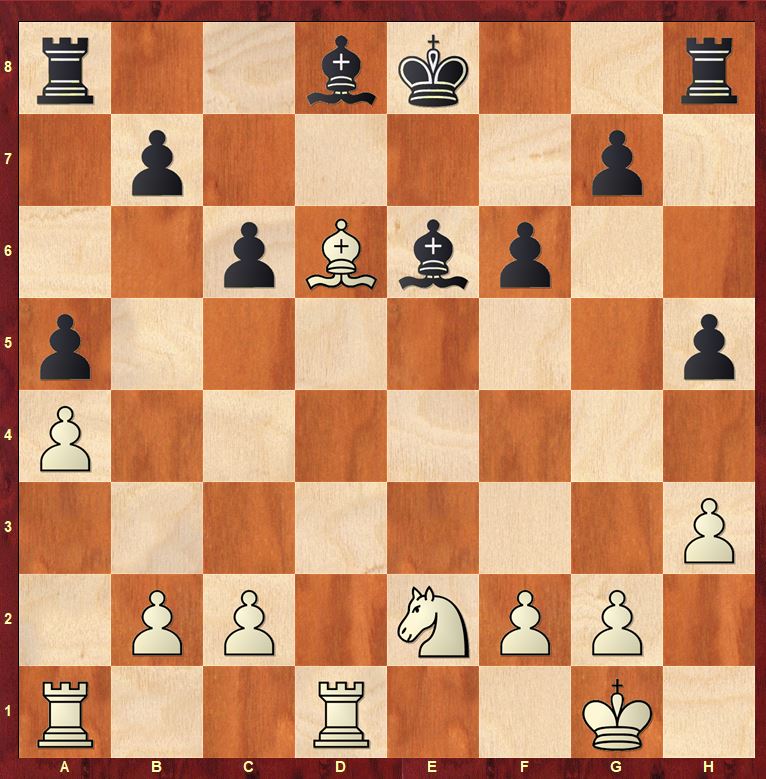
21.Nd4 Bc8 and do have a look at this position – all Black’s pieces are in the first rank, and typical of the modern opening, he is FINE!? Once again, it is impossible to analyse such positions in full, with all their intricacies and nuances. We can only hope that white is slightly better, for the sake of chess being a ‘just’ game! The game ended in a draw after 40 long moves, and nothing much happened, as far as we could see. And ‘Sasha’ Grischuk too echoed our sentiments, when he answered the question, “What were you trying to accomplish in this game?” he answered with “I was trying to finish it!”

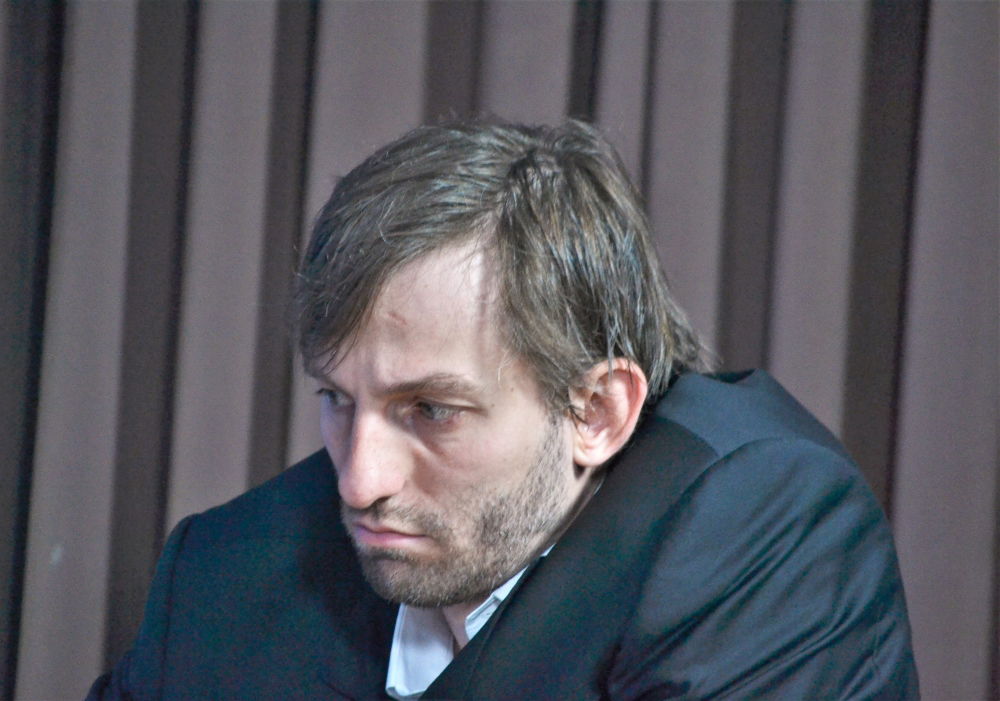
Now, continuing our musings about openings, we were delighted to find that the Tarrasch defence, a relatively rare guest at the top level was employed in two games today. Though Wesley So has employed it occasionally, against Carlsen himself twice in online blitz events it was still a surprise.

Round 5: Carlsen – Wesley So
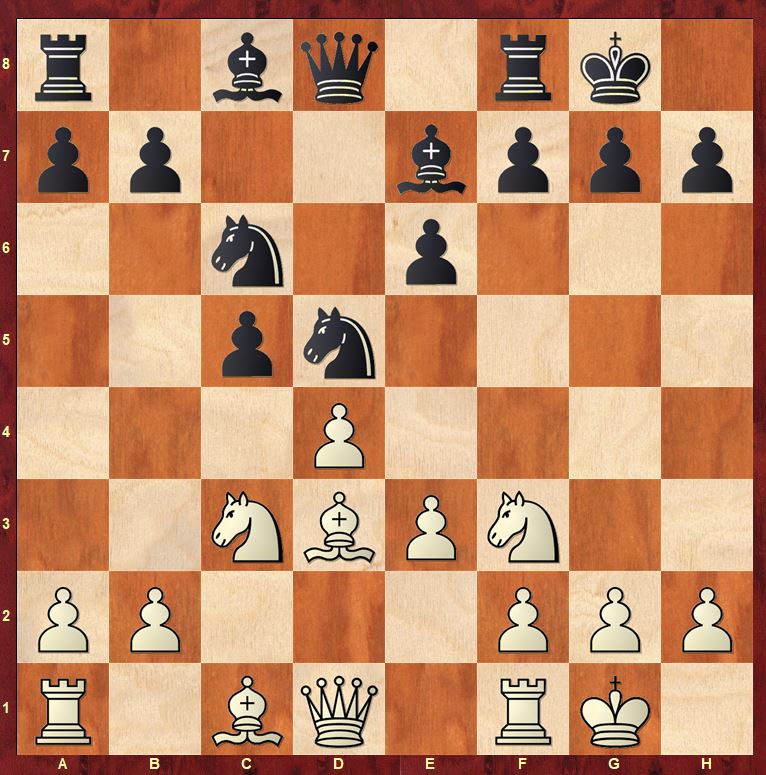
9.Qe2 b6 10.Rd1 cxd5…Typical of Carlsen, white doesn’t seem to be pursuing any advantage seriously. This approach is typical of the world champion, following a ‘maximalistic’ path in openings - choosing an obscure setup in the opening and probing the opponent to the fullest.
Carlsen finally seemed to gain something out of the position and reach an advantage in the middlegame:
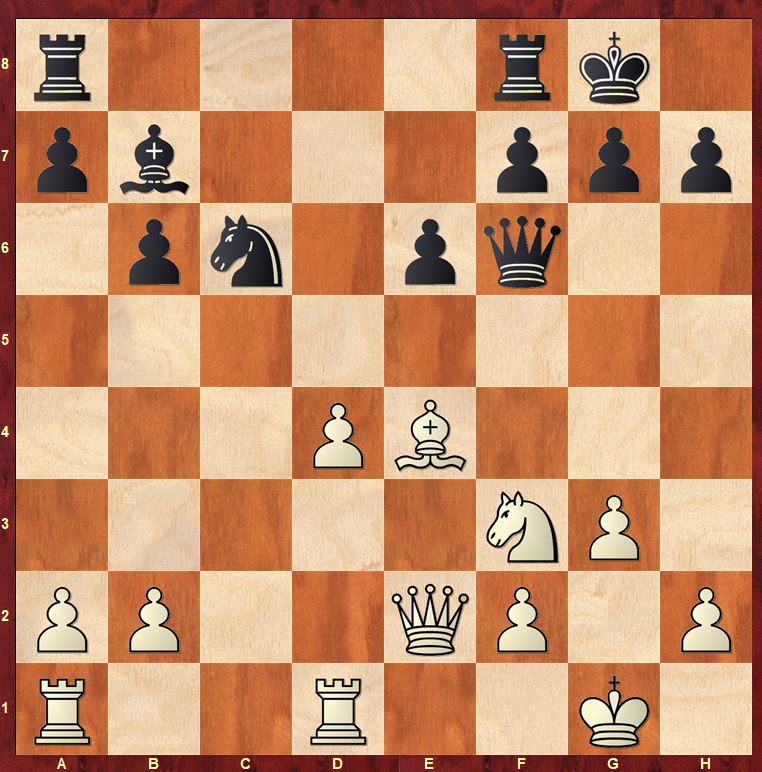
17.Ne5 (Getting into forced lines, convinced of the advantage, but 17.Rac1 Rac8 18.Rc3 and doubling the rooks might have given him a bigger advantage) 17…Rfc8 18.Qb5 Na5 19.Bxb7 Nxb7 20.Qd7 Nc5
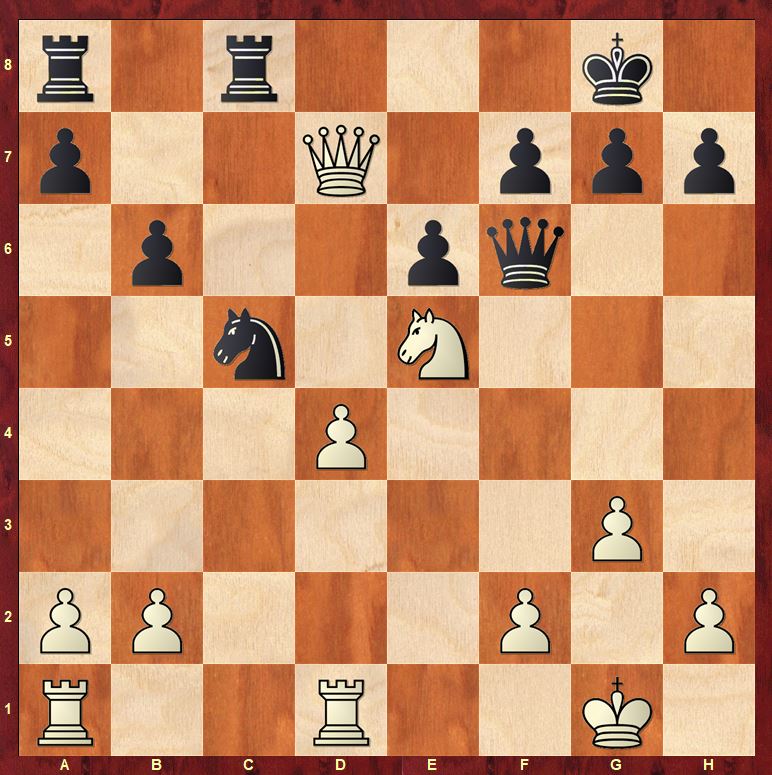
21.dxc5 [Later on, after establishing that Carlsen indeed did not have a win in the game, an improvement was found here: 21.Qxf7+ Qxf7 22.Nxf7 Kxf7 23.dxc5 Rxc5 24.Rd7 + Kf6 25.b3!? and white might be able to pursue an advantage here(25.a4 Rac8! and Black might equalize the endgame)] 21…Qxe5 22.c6 h5 23.Rd6 Qxb2 24.Rad1 and it looked like Carlsen indeed had a very good advantage.
At this point, Vachier-Lagrave had finished his game and opined he considered Magnus to have a clear advantage, “I am pretty sure Magnus is going to win, the engines might think otherwise but I think he is just winning”.
But to his credit, So held a tough position and achieved the draw:
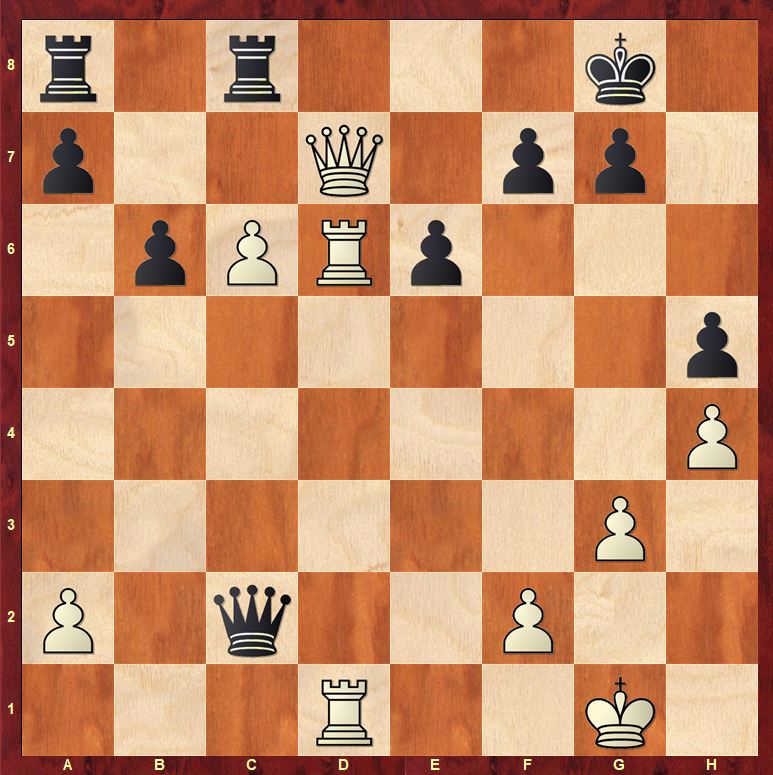
25…Rd8! 26.Qxd8 Rxd8 27.Rxd8 Kh7 and Wesley proved that this position was indeed holdable for Black. Carlsen acknowledged, “Today is one of those days when you have to say, ‘Good Defence!’ and try again next time!”
Finally, to the most dramatic game of the day which also followed the most interesting path in the opening:
Round 5: Nakamura - Mamedyarov
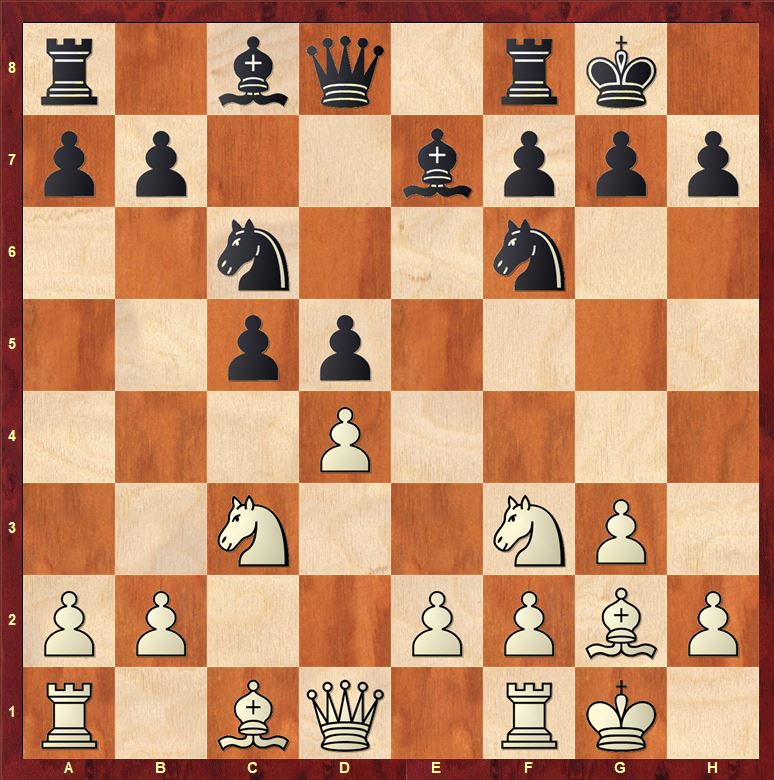
9.h3!? [Curious. Surprised by the Tarrasch Defence which his opponent has almost never played, Nakamura plays the mainline with white pieces, but sidesteps with a rare move here, taking the chance that his opponent might not have prepared for it. Clever!?] 9…Ne4 [Nakamura probably got the surprise right, as Mamedyarov took almost 10 minutes for this move. Assuming that Nakamura hadn’t prepared this position before the game, we have two of the strongest players in the world playing chess on their own from the opening stage itself] 10.dxc5 Bxc4 11.Bf4 and finally a new move, played after a 10 minutes thought and hence an over the board creation….
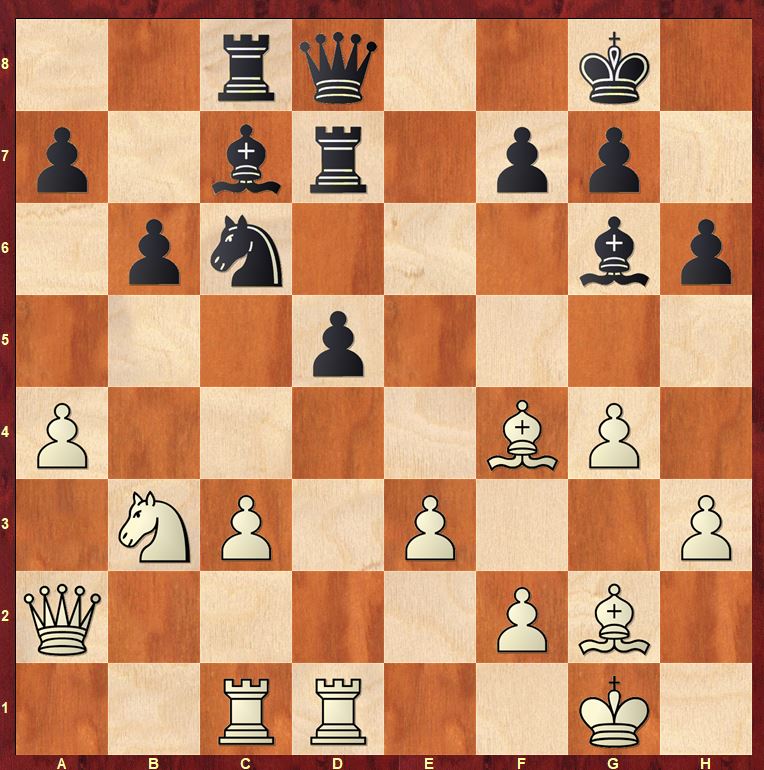
When two of the most spirited players in the world play a strategically dynamic opening relying on their own middlegame prowess without prior knowledge of the position, you have an interesting game on the cards! 22.Qd2 f5!? One can always rely on Shakh to play such spirited chess! The position erupted into a full-fledged fight now, delighting the spectators. [22…Ne5 was possible too, aiming to sacrifice the pawn and hoping that white has a ‘loose’ position strategically: 23.Bxe5 Bxe5 24.f4 Bd6 25.Qxd5 Qe7 and black has enough compensation for the pawn]
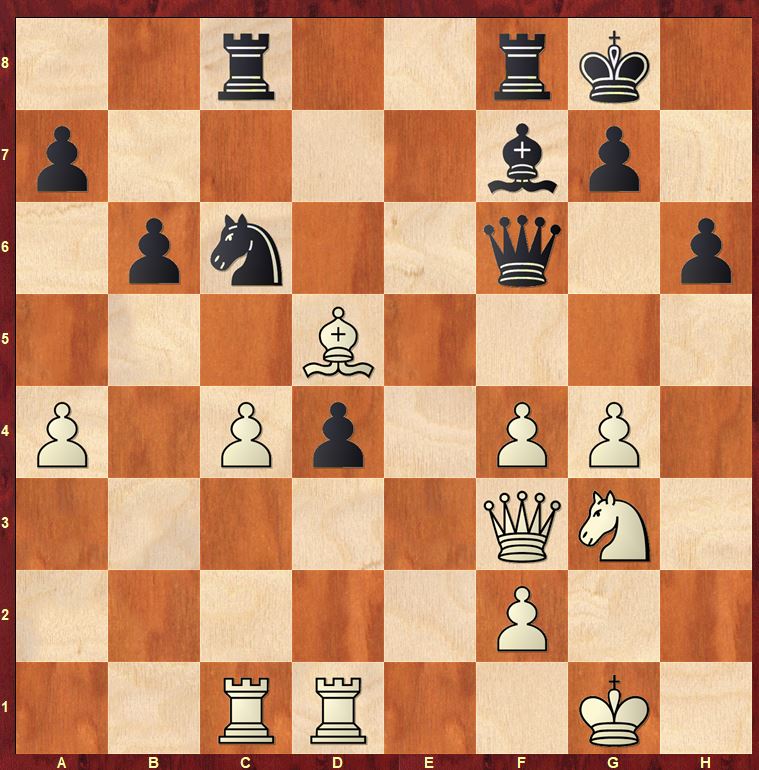
By now, Mamedyarov had understood that his position was worse, and had repeated the position twice with the text. 34.Ne4 here was a threefold repetition and a draw, but Hikaru fought on with 34.Nf5! [Also interesting was 34.g5!? hxg5 35.Ne4 Qh6! (35…Qxf4 is met with 36.Qxf4 gxf4 37.Nd6) 34…Kh8 35.Bxf7 Rxf7 36.c5 and white has a clear advantage here.
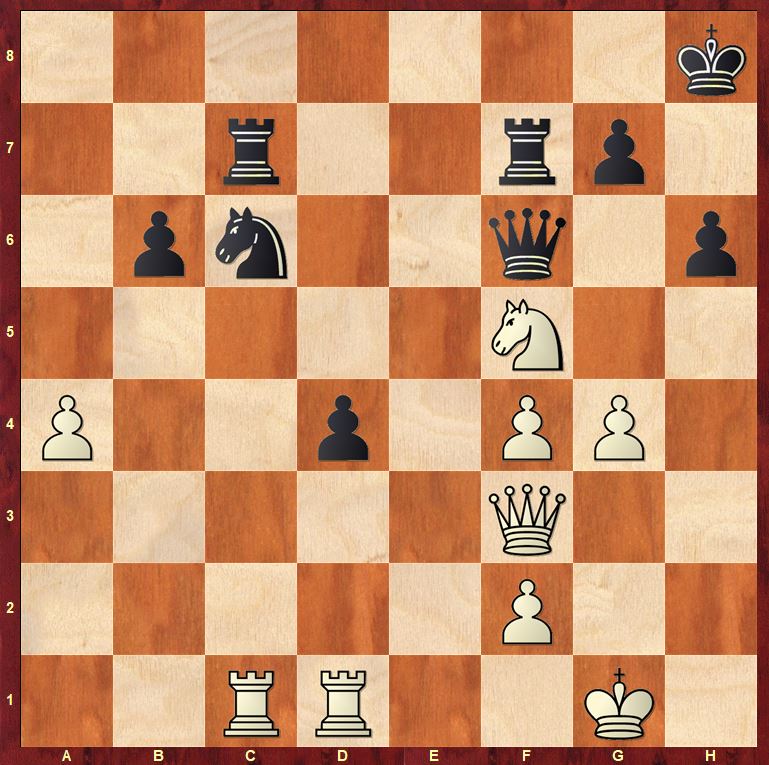
38.Re1 [Does not squander the advantage away, but he had a clear path to a win with 38.Qe4! here. The point is, white has almost succeeded in creating a tactical zugzwang, almost! If nothing, he has 39.Nxd4 as a threat. After 38…Rf8 39.Nxd4 Re7 40.Qxc6 Qxf4, though white’s kingside isn’t too encouraging, black doesn’t have complete compensation for the piece. This is only a sample variation, as the position is rich with possibilities] 38…Rf8 (Both the players were down to their last minute here) 39.Qe4? [Full of spirit but less on time, Nakamura goes wrong here and blunders all his advantage away. The point is he missed a simple knight fork for the opponent, whereas sidestepping it with 39.Kg2 would have preserved all his advantage] 39…g6! Only move, and Mamedyarov played it immediately to his credit

40.Nxd4 [40.Nxh6 Re7 and there are several interesting lines here but both sides have enough tactical resources to achieve parity:
A] 41.g5 Rxe4 42.gxf6 Rxe1 43.Rxe1 Rxf6 with a level ending
B] 41.Qf3 Ne5 42.Rxe5 Rxe5 43.Nf5! Rxf5! 44.gxf5 Qxf5 with equality
C] The most interesting was 41.Qh1 and black can achieve equality in many ways, the prettiest of them being 41…Rxe1 42.Rxe1 Kg7 43.Qe4 d3! (43…Qxf4? 44.Nf5!) 44.Qxd3 Qxf4 45.Nf5! gxf5 46.Qd7 Rf7 47.Qxc6 Qxg4+ leads to a draw!] 40…Qxd4 and black survives due to the knight fork after 41.Qd4 Nxd4 42.Rxc7 Nf3+ leading to a drawn ending.
A Funny situation was observed on the board when Mamedyarov played 40…Qxd4: both the players were disappointed with themselves and were shaking their heads for a long time! Hikaru was obviously upset that he squandered an advantage after building it up for so long in the middlegame. Shakhriyar’s case was a little puzzling: first he thought he had messed up and was losing. But after 39…g6 he was optimistic about his chances though he wasn’t sure of win.
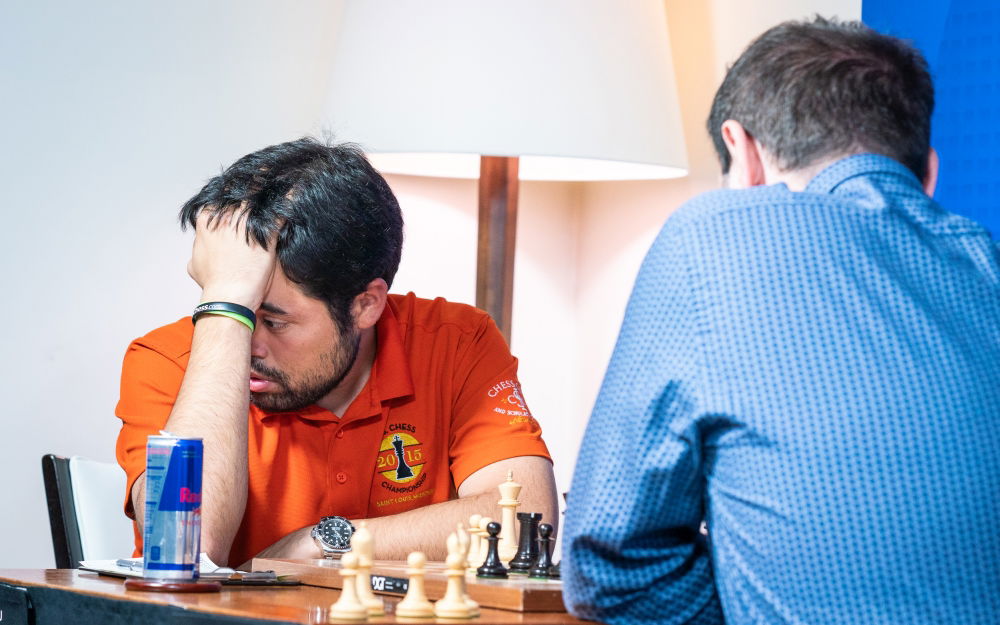

Shakhriyar Mamedyarov, also upset with the position | Photo – Saint Louis Chess Club / Lennart Ootes

What was everyone’s Rest Day plans?
Aronian – “I am just going to rest. Take a day without any chess in it. Just feeling like a normal person! Going to the movies, doing some sports, playing some game with somebody…but not too stressful”.
Anand – “I am going to rest! I am actually looking forward to a little break. All the work during the rounds and before the rounds is quite tiring. So you have to grab your only rest day, so probably I will hit the gym today, try to get some tension off”.
Carlsen – “I have been focused on the games in the last few days, I haven’t thought much about it”.
Caruana – “I think I will be playing some Tennis. Tennis Doubles, with Cristian Chirila, Maxime Vachier-Lagrave and Rustam Kasimdzhanov. (Who is the best among them?) Not me! By far I am the worst among them!”
Vachier-Lagrave – “Will join for the tennis. (How good are you?) Pretty bad! Doesn’t matter! I think I’ve embarrassed myself enough with videos of me doing sports. (If anyone comes to film) they will have to show only the highlights!”
Grischuk – “Depends. If Magnus will organise Basketball with Peter Heine Nielsen, I will be able to join. And another idea is to play Dominoe with Shakh. It is extremely popular with Azerbaijan. And as usual just to rest, it is always nice.”
Karjakin – “I have some friends in Saint Louis. Hopefully I will meet with them”.
Mamedyarov – “I am tired a little bit from chess. In the last 3 months I have been playing chess for 71 days. So I will go to some restaurants and relax. I love Dominoes too much (too). Some days, when Sasha comes to Baku, I play 10 hours of Dominoes with him! We have brought Dominoes here, and we will play! I even played the Azerbaijan Dominoes championship. After 3 rounds I was leading there. I play first board in Dominoes!”
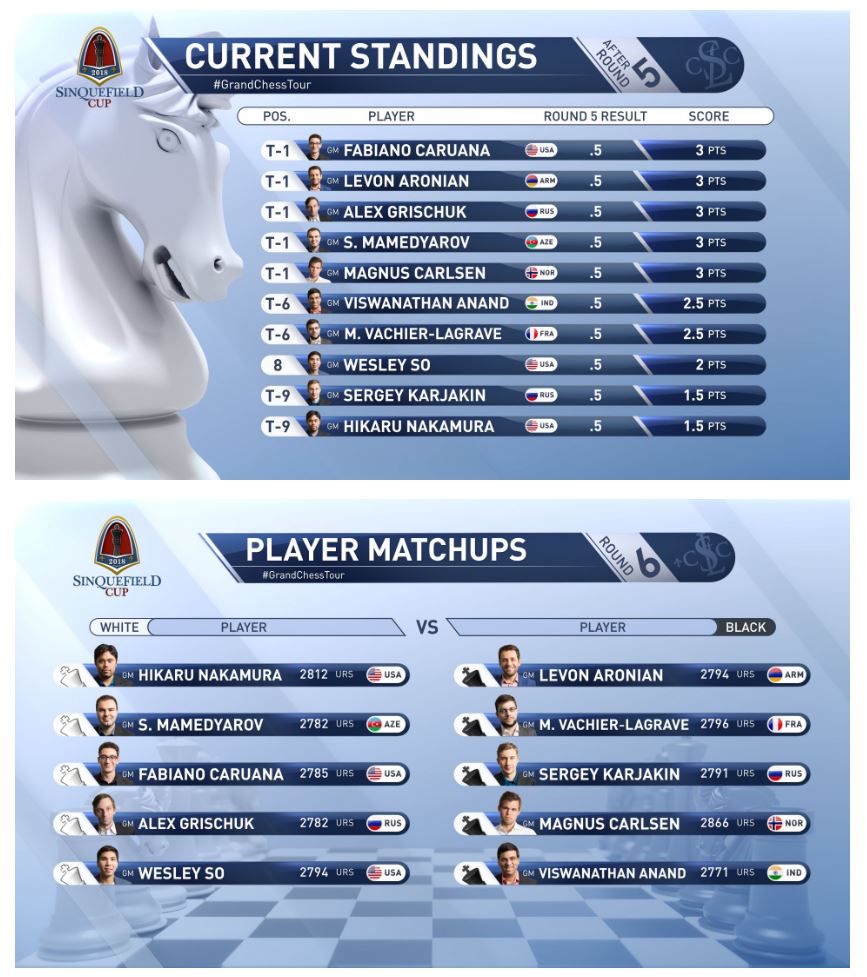
About the Author:

Saravanan Venkatachalam is an International Master and has been an active chess player in the Indian circuit, and has been consistently writing on chess since late 1980s. He turned complete chess professional in 2012, actively playing and being a second and a trainer to a handful of Indian players. He reports on chess tournaments, occasionally being a correspondent to national newspapers and news channels. Apart from chess, he is also interested in Tamil and English literature, music and photography.

Firstpost and ChessBase India have tied up to bring you high quality chess news coverage. You can follow the Firstpost website for daily articles published by Saravanan on the Saint Louis Rapid and Blitz and also Sinquefield Cup 2018.

